-
 Bitcoin
Bitcoin $101,898.5005
-0.75% -
 Ethereum
Ethereum $2,258.1125
-1.07% -
 Tether USDt
Tether USDt $1.0004
0.01% -
 XRP
XRP $2.0178
-2.93% -
 BNB
BNB $624.0243
-1.53% -
 Solana
Solana $134.3298
-0.90% -
 USDC
USDC $0.9999
0.01% -
 TRON
TRON $0.2675
-2.05% -
 Dogecoin
Dogecoin $0.1538
-1.96% -
 Cardano
Cardano $0.5482
-1.11% -
 Hyperliquid
Hyperliquid $35.5636
5.45% -
 Bitcoin Cash
Bitcoin Cash $453.4902
-1.66% -
 Sui
Sui $2.5134
-2.97% -
 UNUS SED LEO
UNUS SED LEO $9.1292
1.77% -
 Chainlink
Chainlink $11.8457
-1.60% -
 Stellar
Stellar $0.2312
-2.73% -
 Avalanche
Avalanche $16.9721
0.29% -
 Toncoin
Toncoin $2.7549
-3.82% -
 Shiba Inu
Shiba Inu $0.0...01081
-1.10% -
 Litecoin
Litecoin $80.8250
-0.71% -
 Hedera
Hedera $0.1374
0.21% -
 Monero
Monero $305.4827
-2.36% -
 Ethena USDe
Ethena USDe $1.0006
0.00% -
 Dai
Dai $1.0000
-0.01% -
 Polkadot
Polkadot $3.2085
-3.12% -
 Bitget Token
Bitget Token $4.0845
-3.13% -
 Uniswap
Uniswap $6.3353
-1.63% -
 Pi
Pi $0.5085
-0.70% -
 Pepe
Pepe $0.0...08913
-3.82% -
 Aave
Aave $232.7090
-0.58%
Is VWAP important for bulk transactions? How to judge the reasonable transaction range?
VWAP is crucial for bulk crypto transactions, providing a fair price benchmark; traders should compare transaction prices to VWAP to assess deal favorability.
May 24, 2025 at 06:29 am
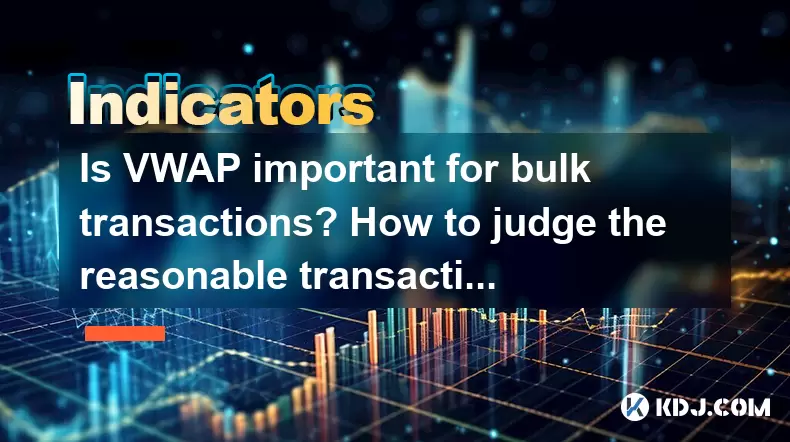
Is VWAP important for bulk transactions? How to judge the reasonable transaction range?
In the world of cryptocurrencies, bulk transactions are a common occurrence, and understanding the tools and metrics available to navigate these transactions is crucial. One such tool is the Volume Weighted Average Price (VWAP). This article delves into the importance of VWAP for bulk transactions and provides guidance on how to judge a reasonable transaction range.
What is VWAP and Why is it Important for Bulk Transactions?
VWAP is a trading benchmark used by investors to determine the average price of a cryptocurrency over a specific period, weighted by volume. It is calculated by taking the total dollar amount traded for every transaction (price multiplied by the number of units traded) and dividing it by the total volume of transactions within that period. The formula for VWAP is as follows:
[ \text{VWAP} = \frac{\sum (P_i \times V_i)}{\sum V_i} ]
Where:
- ( P_i ) is the price of the transaction
- ( V_i ) is the volume of the transaction
For bulk transactions, VWAP is particularly important because it provides a fair benchmark price that accounts for both price and volume. When executing large orders, traders often aim to buy or sell at a price better than the VWAP to ensure they are getting a favorable deal. By comparing their transaction prices to the VWAP, traders can assess the efficiency and cost-effectiveness of their trades.
How to Calculate VWAP for Cryptocurrency Transactions
Calculating VWAP for cryptocurrency transactions involves a few steps that traders can follow to gain insights into market conditions. Here’s how to do it:
- Gather Data: Collect the price and volume data for the cryptocurrency over the desired time period. This data is usually available from trading platforms or market data providers.
- Calculate the Product: For each transaction, multiply the price by the volume to get the total dollar amount traded.
- Sum the Products and Volumes: Sum all the products obtained in the previous step to get the total dollar amount traded, and sum all the volumes to get the total volume traded.
- Divide: Divide the total dollar amount traded by the total volume traded to get the VWAP.
Using this method, traders can compute the VWAP for any given period, allowing them to make informed decisions about their bulk transactions.
Judging the Reasonable Transaction Range Using VWAP
Determining a reasonable transaction range for bulk transactions involves using VWAP as a reference point. Here are the steps to judge the transaction range:
- Compare to VWAP: Compare the intended transaction price to the current VWAP. If the transaction price is below the VWAP for a buy order, or above the VWAP for a sell order, it might be considered a good deal.
- Analyze Historical Data: Look at historical VWAP data to understand the typical range of prices. This can help in setting realistic expectations for the transaction price.
- Consider Market Conditions: Take into account current market conditions, such as volatility and liquidity. In highly volatile markets, the VWAP might fluctuate significantly, affecting the transaction range.
- Set a Range: Based on the above factors, set a reasonable range for the transaction price. For instance, a trader might decide that a buy order price should be within 1% to 2% below the VWAP to be considered favorable.
By following these steps, traders can effectively judge the reasonableness of their bulk transaction prices and optimize their trading strategies.
Using VWAP in Trading Strategies
Incorporating VWAP into trading strategies can enhance the execution of bulk transactions. Here are some ways traders can use VWAP:
- VWAP as a Benchmark: Use VWAP as a benchmark to gauge the performance of trades. If a trader consistently executes trades at prices better than the VWAP, it indicates efficient trading.
- VWAP Crossovers: Some traders use VWAP crossovers as signals for buying or selling. If the price crosses above the VWAP, it might signal a buying opportunity, and if it crosses below, it might signal a selling opportunity.
- VWAP and Order Slicing: For large orders, traders can slice the order into smaller parts and execute them at different times to minimize the impact on the market price. VWAP can help in determining the optimal timing for these smaller trades.
By leveraging VWAP in these ways, traders can improve their decision-making process and achieve better outcomes in their bulk transactions.
Limitations of VWAP in Cryptocurrency Markets
While VWAP is a valuable tool, it is important to be aware of its limitations, especially in the context of cryptocurrency markets:
- Volatility: Cryptocurrency markets are known for their high volatility, which can lead to significant fluctuations in VWAP. Traders must be cautious and adjust their strategies accordingly.
- Liquidity: In less liquid markets, the VWAP might not accurately reflect the true market price due to fewer transactions. This can make it challenging to use VWAP effectively.
- Time Period Sensitivity: The VWAP is sensitive to the chosen time period. Different time frames can yield different VWAP values, which can affect the analysis and decision-making process.
Understanding these limitations can help traders use VWAP more effectively and make more informed decisions about their bulk transactions.
Practical Example of Using VWAP for a Bulk Transaction
To illustrate how VWAP can be used in practice, consider the following example:
A trader wants to buy 1000 units of Bitcoin (BTC) in a bulk transaction. The current market conditions are as follows:
- Current Price: $30,000 per BTC
- Current VWAP: $29,800 over the last 24 hours
The trader decides to set a target buy price range of 1% to 2% below the current VWAP. This means the target buy price would be between $29,502 and $29,204 per BTC.
- Execution Strategy: The trader slices the order into smaller parts and executes them at different times to minimize market impact. They monitor the VWAP throughout the day and execute the orders when the price falls within the target range.
By using VWAP as a guide and slicing the order, the trader can potentially achieve a better average price for the bulk purchase of BTC.
Frequently Asked Questions
Q1: Can VWAP be used for intraday trading in cryptocurrencies?
Yes, VWAP can be used for intraday trading in cryptocurrencies. Traders can calculate the VWAP over shorter time frames, such as 1-hour or 4-hour periods, to make quick trading decisions based on price and volume data.
Q2: How does VWAP differ from other trading indicators like moving averages?
VWAP differs from moving averages in that it takes into account both price and volume, providing a more comprehensive view of the market. Moving averages only consider price data, which can sometimes lead to less accurate signals in highly volatile markets.
Q3: Is VWAP more effective in certain types of cryptocurrency markets?
VWAP is generally more effective in markets with higher liquidity and volume, as it provides a more accurate representation of the average price. In less liquid markets, the VWAP might be less reliable due to fewer transactions.
Q4: Can VWAP be used to predict future price movements?
While VWAP itself is not a predictive tool, it can be used in conjunction with other indicators to make informed predictions about future price movements. Traders often use VWAP crossovers and other technical analysis tools to anticipate market trends.
Disclaimer:info@kdj.com
The information provided is not trading advice. kdj.com does not assume any responsibility for any investments made based on the information provided in this article. Cryptocurrencies are highly volatile and it is highly recommended that you invest with caution after thorough research!
If you believe that the content used on this website infringes your copyright, please contact us immediately (info@kdj.com) and we will delete it promptly.
- Bitcoin Price Wobbles: Crash Watch and Key Support Levels
- 2025-06-23 16:25:12
- Navigating the Crypto Seas: Charting a Course Through Bull Runs and Bear Markets
- 2025-06-23 16:25:12
- BNB Price Check: Stablecoin Surge vs. Prediction Rollercoaster
- 2025-06-23 14:25:12
- Metaplanet's Bitcoin Bonanza: Holdings Skyrocket Amidst Market Swings
- 2025-06-23 14:25:12
- Global Meltdown, Investors, and Safe Havens: Navigating the Storm
- 2025-06-23 14:30:12
- NFT Sales Snapshot: Guild of Heroes, Polygon, and the Market's Shifting Sands
- 2025-06-23 15:25:12
Related knowledge

How much volume is required for the W-bottom to break through the neckline of the time-sharing chart?
Jun 23,2025 at 04:21pm
Understanding the W-Bottom Pattern in Cryptocurrency TradingThe W-bottom pattern is a popular technical analysis formation used by traders to identify potential bullish reversals. It typically appears at the end of a downtrend and resembles the letter 'W' on price charts. In the context of cryptocurrency trading, where volatility is high and trends shif...
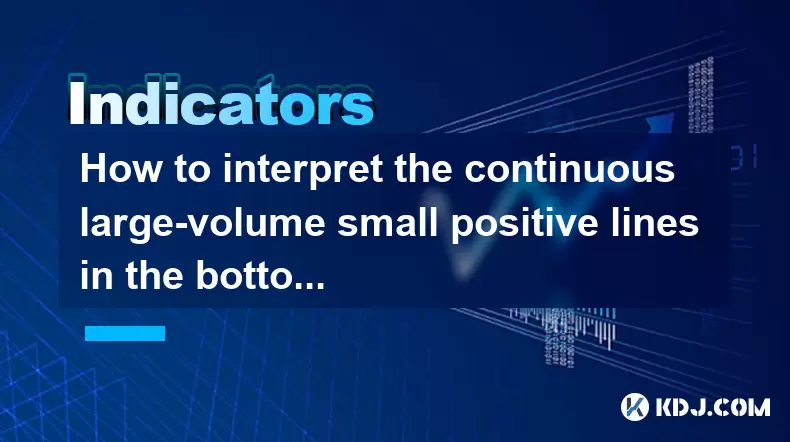
How to interpret the continuous large-volume small positive lines in the bottom area?
Jun 23,2025 at 04:43pm
Understanding the Basics of 'Large-Volume Small Positive Lines'In technical analysis, especially within the cryptocurrency market, the pattern known as 'large-volume small positive lines' refers to a scenario where the price increases slightly (small positive candlestick) but is accompanied by unusually high trading volume. This phenomenon typically occ...

How to read the sideways consolidation after the bottom volume and long positive line?
Jun 23,2025 at 02:28pm
Understanding the Sideways ConsolidationWhen analyzing cryptocurrency charts, sidewards consolidation refers to a phase where prices move within a narrow range without a clear upward or downward trend. This pattern often appears after significant price movements, such as a sharp increase followed by a period of equilibrium between buyers and sellers. In...
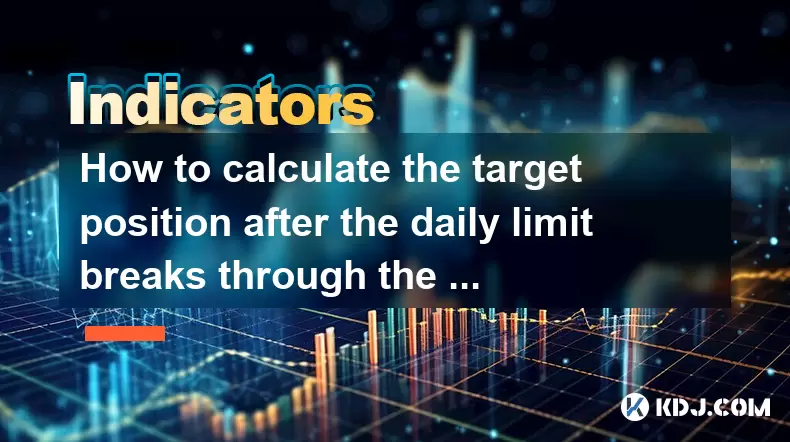
How to calculate the target position after the daily limit breaks through the previous high?
Jun 23,2025 at 02:57pm
Understanding the Daily Limit BreakthroughIn cryptocurrency trading, a daily limit typically refers to the maximum price movement allowed within a single trading day on certain exchanges. When this limit is breached, especially when it surpasses the previous high, traders often seek to calculate the target position or expected price movement following s...
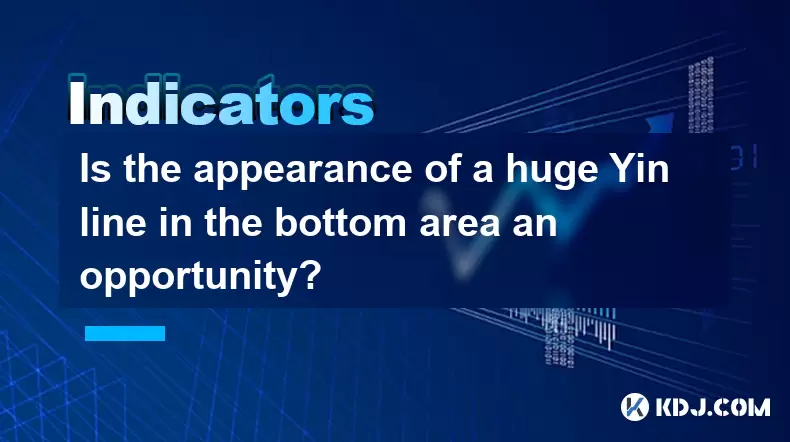
Is the appearance of a huge Yin line in the bottom area an opportunity?
Jun 23,2025 at 04:07pm
Understanding the Meaning of a Huge Yin LineIn technical analysis within the cryptocurrency market, a huge Yin line is often interpreted as a strong bearish signal. It indicates that sellers have dominated the market over a specific period, pushing prices significantly downward. When this occurs in what appears to be a bottom area, traders might questio...
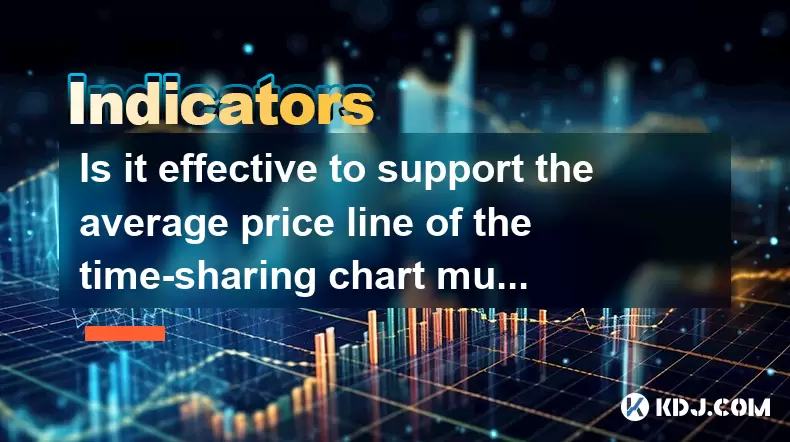
Is it effective to support the average price line of the time-sharing chart multiple times?
Jun 23,2025 at 01:36pm
Understanding the Average Price Line in Time-Sharing ChartsIn cryptocurrency trading, time-sharing charts refer to real-time price charts that display price movements over short intervals, often within a single trading day. Within these charts, the average price line, also known as the Volume Weighted Average Price (VWAP), is a commonly used technical i...

How much volume is required for the W-bottom to break through the neckline of the time-sharing chart?
Jun 23,2025 at 04:21pm
Understanding the W-Bottom Pattern in Cryptocurrency TradingThe W-bottom pattern is a popular technical analysis formation used by traders to identify potential bullish reversals. It typically appears at the end of a downtrend and resembles the letter 'W' on price charts. In the context of cryptocurrency trading, where volatility is high and trends shif...

How to interpret the continuous large-volume small positive lines in the bottom area?
Jun 23,2025 at 04:43pm
Understanding the Basics of 'Large-Volume Small Positive Lines'In technical analysis, especially within the cryptocurrency market, the pattern known as 'large-volume small positive lines' refers to a scenario where the price increases slightly (small positive candlestick) but is accompanied by unusually high trading volume. This phenomenon typically occ...

How to read the sideways consolidation after the bottom volume and long positive line?
Jun 23,2025 at 02:28pm
Understanding the Sideways ConsolidationWhen analyzing cryptocurrency charts, sidewards consolidation refers to a phase where prices move within a narrow range without a clear upward or downward trend. This pattern often appears after significant price movements, such as a sharp increase followed by a period of equilibrium between buyers and sellers. In...

How to calculate the target position after the daily limit breaks through the previous high?
Jun 23,2025 at 02:57pm
Understanding the Daily Limit BreakthroughIn cryptocurrency trading, a daily limit typically refers to the maximum price movement allowed within a single trading day on certain exchanges. When this limit is breached, especially when it surpasses the previous high, traders often seek to calculate the target position or expected price movement following s...

Is the appearance of a huge Yin line in the bottom area an opportunity?
Jun 23,2025 at 04:07pm
Understanding the Meaning of a Huge Yin LineIn technical analysis within the cryptocurrency market, a huge Yin line is often interpreted as a strong bearish signal. It indicates that sellers have dominated the market over a specific period, pushing prices significantly downward. When this occurs in what appears to be a bottom area, traders might questio...

Is it effective to support the average price line of the time-sharing chart multiple times?
Jun 23,2025 at 01:36pm
Understanding the Average Price Line in Time-Sharing ChartsIn cryptocurrency trading, time-sharing charts refer to real-time price charts that display price movements over short intervals, often within a single trading day. Within these charts, the average price line, also known as the Volume Weighted Average Price (VWAP), is a commonly used technical i...
See all articles
























































































